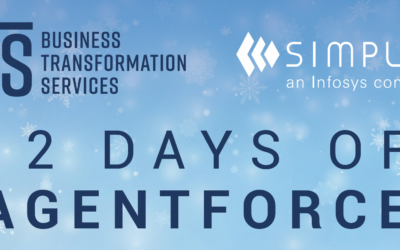Every three minutes, somewhere in the world, a family hears the devastating words that their child has cancer. Being a father of a five-year-old son and a one-year-old daughter, I can’t imagine the pain and suffering this horrible illness places on families.
In the US, there are an estimated 15,780 children between newborn and 19 years of age diagnosed with cancer annually. Approximately 1 in 285 children in the U.S. will be diagnosed with cancer before their 20th birthday. Globally there are more than 300,000 children diagnosed with cancer each year.
The battle against childhood cancer continues
In the last 40 years, the overall survival rate for childhood cancer has increased from 10 percent to over 85 percent today, but the survival rate remains much lower for many more rare childhood cancers. During the same timeframe, the number of children diagnosed with leukemia has also increased by about 35 percent.
The journey for the cancer survivors, unfortunately, doesn’t end in their childhood. Nearly 60 percent of childhood cancer survivors experience severe or life-threatening complications as adults. So, while cancer research works hard to find ways to treat childhood cancer, we can encourage behaviors that may lower cancer risk and provide holistic care for the patient and caregivers.
The role technology plays in treating cancer
As someone who researches the relationship between technology and the Health and Life Sciences and Industries, it’s encouraging to see the personalized and collaborative impact technology has on helping healthcare providers understand cancer behavior and enhancing more targeted treatment.
Treatment that was once “cookie-cutter care” and relied almost entirely on routine blasts of chemotherapy and radiation is now a personalized program that, in most cases, first identifies the type and behavior of the cancer cell to determine the best form of treatment.
Today, medical technology helps healthcare providers, payers, pharmaceutical companies, and the patient coordinate customized treatment plans that ensure patients (even pint-sized ones) have all the advantags to win their fight with cancer. Here’s how:
Providers
Thanks, in part, to COVID-19 restrictions, the move toward telehealth services accelerated among healthcare providers. Even the oncology field is exploring this technology to supplement in-person visits. While remaining comfortable at home, vital patient monitoring data gets recorded in a central system. Also, considering a parent is the primary caregiver in most cases, telehealth services can ensure regular checkups while lightening the load on parents who are also caring for other family members.
Technology also allows for specialized care coordination. For instance, Salesforce is a single platform solution that allows cancer treatment centers to develop a holistic offering for their patients by offering services in provider, payer, pharma, and Medtech.
Now, care management can expand from home health care to complex care management. With the help of Mulesoft, the platform can connect to other systems that provide specialized business use cases. By leveraging Tableau, the organization can analyze data to constantly improve its services for its patients, such as coordinating care plans, timelines, and daily care tasks with the team. As a result, the caregivers and the care team can stay connected, aligned, and patient-centric during the length of the illness.
Payers
As oncology moves toward value-based care, insurance companies are focusing on preventative care, and that requires volumes of reliable data, including real-time data.
“As important as collaboration and cost containment measures are to the success of a value-based care model, they cannot happen without a solid foundation of data,” explains Roberta Kafora, MSN, RN, OCN. “Comprehensive patient data allows oncologists to better evaluate treatment outcomes and determine what, if any, changes could be made to prevent ER visits or admissions.” Roberta added that data is the basis for deploying advanced communications such as texting medication and appointment reminders.
The care plan negotiations and care approvals become a seamless part of the journey along the provider and pharmaceutical space. With this automated model, pre-approvals, reimbursements, and co-pays are easily managed through patient services and care management programs at pharmaceuticals and providers respectively.
Pharmaceutical Technology
Statistics show that Oncologics, along with pain therapy and anti-diabetics, topped recent global pharmaceutical sales, with revenue hovering around $100 million. The impact of real-time data is ideally illustrated in the pharmaceutical branch of healthcare services.
Pharmaceutical companies are constantly developing therapeutics to help our littlest cancer patients feel better during treatment. These companies leverage data-driven product development that uses patient information to create a highly personalized therapy for each patient. While personalized medicine delivers comfort, patient services actively engage the caregivers, patient support, and financial support, bringing the patient holistic support. Patient services programs can interconnect with the care management programs of the cancer treatment centers.
“Another use for real-time data analytics is to monitor prescription choices,” said Kelsey Waddill. Many major companies use real-time data to ensure that members aren’t prescribed medications that may conflict with other drugs or are ineffective for their condition.
“If payers can pinpoint when a particular service is in higher demand, they can innovate more precisely to address that consumer need, said Waddill. “This data can also support payers as they determine how to reimburse for certain services such as telehealth.”
Cancer is most cases is unavoidable. ven now, seven children die from cancer every day in the US, and 46 children will be newly diagnosed. But as pharma and MedTech work together and coordinate with payers and healthcare providers to offer more effective, affordable, and simplified options, such as affordable preventative care and screening, telehealth services, self-service portals, online monitoring, etc., the battle continues.
For more information on how Salesforce Health Cloud can streamline your practice’s workflow process for an improved patient experience, click here.
This month, go gold and consider supporting any of the childhood treatment institutions by making a donation. Organizations like acco.org have more information for your consideration: Go-gold for childhood cancer















0 Comments